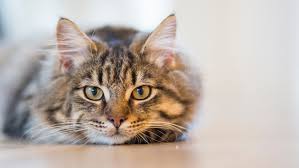Test IG HomePage
page source: index.md
This is the Continuous Integration Build of the sampler2 Implementation Guide, based on FHIR Version 3.0.0. See the Directory of published versions based on FHIR Version 3.0.1. See the Directory of published versions 
- Cat Facts (To Show How the Text Wraps around the Contents Block)
- Jekyll Site Variables
- Introduction
- More Stuff
Cat Facts (To Show How the Text Wraps around the Contents Block)
The domestic cat[1][5] (Latin: Felis catus) is a small, typically furry, carnivorous mammal. They are often called house cats when kept as indoor pets or simply cats when there is no need to distinguish them from other felids and felines.[6] Cats are often valued by humans for companionship and for their ability to hunt vermin. There are more than 70 cat breeds, though different associations proclaim different numbers according to their standards.
Cats are similar in anatomy to the other felids, with a strong flexible body, quick reflexes, sharp retractable claws, and teeth adapted to killing small prey. Cat senses fit a crepuscular and predatory ecological niche. Cats can hear sounds too faint or too high in frequency for human ears, such as those made by mice and other small animals. They can see in near darkness. Like most other mammals, cats have poorer color vision and a better sense of smell than humans. Cats, despite being solitary hunters, are a social species and cat communication includes the use of a variety of vocalizations (mewing, purring, trilling, hissing, growling, and grunting), as well as cat pheromones and types of cat-specific body language.[7]
Cats have a high breeding rate.[8] Under controlled breeding, they can be bred and shown as registered pedigree pets, a hobby known as cat fancy. Failure to control the breeding of pet cats by neutering, as well as the abandonment of former household pets, has resulted in large numbers of feral cats worldwide, requiring population control.[9] In certain areas outside cats’ native range, this has contributed, along with habitat destruction and other factors, to the extinction of many bird species. Cats have been known to extirpate a bird species within specific regions and may have contributed to the extinction of isolated island populations.[10] Cats are thought to be primarily responsible for the extinction of 33 species of birds, and the presence of feral and free-ranging cats makes some otherwise suitable locations unsuitable for attempted species reintroduction.[11]
Since cats were venerated in ancient Egypt, they were commonly believed to have been domesticated there,[12] but there may have been instances of domestication as early as the Neolithic from around 9,500 years ago (7,500 BC).[13] A genetic study in 2007 concluded that domestic cats are descended from Near Eastern wildcats, having diverged around 8,000 BC in the Middle East.[12][14] A 2016 study found that leopard cats were undergoing domestication independently in China around 5,500 BC, though this line of partially domesticated cats leaves no trace in the domesticated populations of today.[15][16]
As of a 2007 study, cats are the second most popular pet in the US by number of pets owned, behind freshwater fish.[17] In a 2010 study they were ranked the third most popular pet in the UK, after fish and dogs, with around 8 million being owned.[18]
Figure 1 is a picture of a cat to show how to insert an image using markdown.
file:///assets/images/cat.jpg

Jekyll Site Variables
These are the site variables defined here:
-
IG Business version specification (defined in ig.json)- {{site.data.fhir.ig.version}} = 0.0.0
-
IG status (defined in ig.xml)- {{site.data.fhir.ig.status}} = draft
-
Whether is experimental IG (defined in ig.xml) - {{site.data.fhir.ig.experimental}} = true
-
IG Publisher name (defined in ig.xml) - {{site.data.fhir.ig.publisher}} = Health eData Inc
-
dependency url - e.g. “uscore” : Base url of a dependency implementation Guide (defined in ig.json) - {{site.data.fhir.uscore}} = http://build.fhir.org/ig/HL7/US-Core/
-
igName : Title of the implementation Guide (defined in ig.xml) - {{site.data.fhir.igName}} = sampler2
-
path : path to the main FHIR specification (defined in ig.json)- {{site.data.fhir.path}} = http://hl7.org/fhir/STU3
-
canonical : canonical path to this specification (defined in ig.json)- {{site.data.fhir.canonical}} = http://www.fhir.org/guides/sampler2
-
errorCount : number of errors in the build file (not including HTML validation errors) - {{site.data.fhir.errorCount}} = 30
-
version : version of FHIR - {{site.data.fhir.version}} = 3.0.1
-
revision : revision of FHIR - {{site.data.fhir.revision}} = 11917
-
versionFull : version-revision - {{site.data.fhir.versionFull}} = 3.0.1-11917
-
totalFiles : total number of files found by the build - {{site.data.fhir.totalFiles}} = 16
-
processedFiles : number of files genrated by the build - {{site.data.fhir.processedFiles}} = 135
-
genDate : date of generation (so date stamps in the pages can match those in the conformance resources) - {{site.data.fhir.genDate}} = Wed, Feb 14, 2018 23:41-0800
Introduction
blah blah blah


